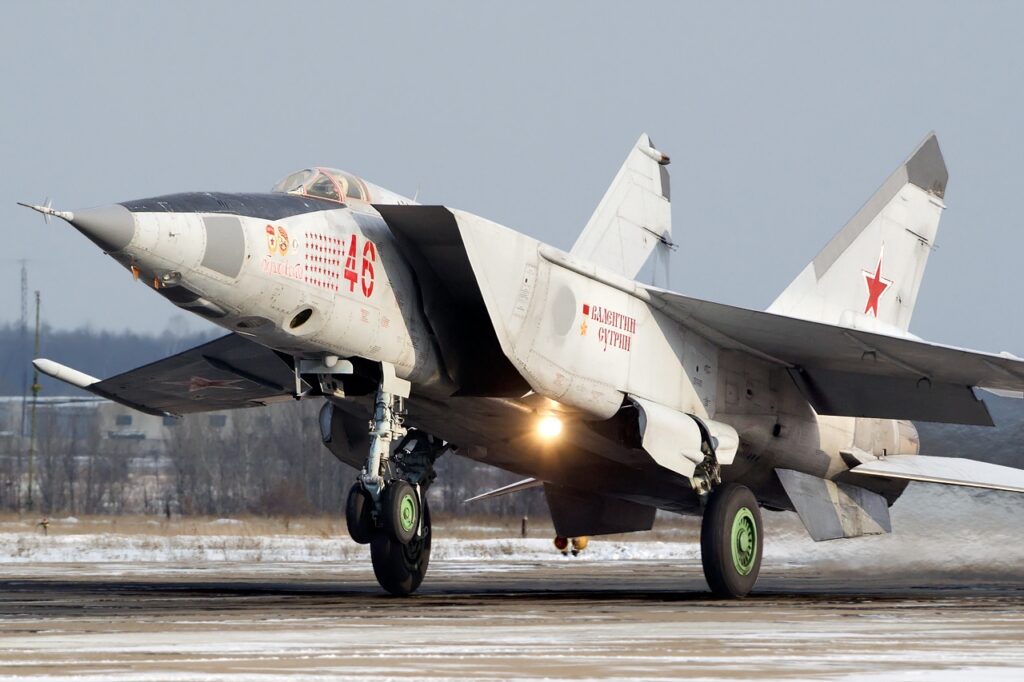MiG-25 Foxbat: A Eulogy for the Soviet Rat Rod
The MiG-25 ‘Foxbat’ is one of the most absurd, deeply flawed, tremendously interesting airframes designed and produced during the 20th century, and we can’t get enough of it. While it served as an adversarial airframe during the Cold War, its recent retirement is bittersweet.
A Brief History…
The MiG-25 “Foxbat,” one of the fastest Soviet military aircraft of the Cold-War era, has gone from endangered species to extinct. The Ukrainians stopped using their MiG-25 aircraft years ago. The Russian Air Force recently stopped using theirs recently because of safety issues and the sheer volume of fuel the Foxbat consumes, and quasi-nation state operators like Syria can barely afford the fuel to get their fleet off the ground.
The Soviets began development on the MiG-25 in the early 1960s, and its design was an extreme case of form following function. Mikoyan-Gurevich was tasked with designing an airframe that was fast enough to intercept the American XB-70 Valkyrie: a nuclear-armed, deep-penetration strategic bomber program which reflected USAF Strategic Air Command’s emphasis on utilizing speed and altitude to penetrate Soviet airspace.
However, while the Valkyrie program was eventually shuttered in favor of a low-altitude, supersonic heavy bomber (the B-1B Lancer), the MiG 25 did make it to production in 1970, and continued to serve operators ranging from the Ukraine, to the Sovie Union, to India, and even Syria.
What makes the Foxbat a Rat Rod?
The definition of a rat rod, in automotive terms, is a vehicle that looks old, beat up – never meant to be pretty – but one that goes like stink. And the Foxbat fits that bill to the letter.
The Foxbat is – let’s be charitable – a bit harsh on the eyes. Because speed was the paramount concern in the design of the Foxbat, the entire airframe was built around two powerful Tumansky engines; the plane’s fuselage, cockpit, wings, weapons, and avionics systems were designed to be packaged around and within the turbojets and massive air intakes. To describe it as a flying hypodermic needle strapped to two massive turbojet would not be hyperbole.
The Soviet Union was often plagued with constant material shortages and the plane itself presented unique challenges, so the result was absolutely incredible. Its very assembly was odd; contrary to aerodynamic best practices, the airframe featured exposed rivet heads.
Now, this single-minded determination to produce a fast plane was successful, but at steep cost. Firstly, owing to the nature and focus of its mission, the Foxbat airframe was not as maneuverable as, say, an F-15. Secondly, the plane would consume fuel at a rate that would make a tank look like a Prius, comparatively, which compromised the aircraft’s range. And finally, and perhaps most importantly, those same Tumansky engines that endowed the aircraft with such immense speed also paradoxically limited top speed to Mach 2.8. So powerful were these turbojets, that, at a bit above Mach 2.8, they functionally became ramjets; the vacuum at the point of air intake would literally begin to suck in and cannibalize adjacent aircraft components. This in turn would require the complete engine-out replacement of both turbojets.
Museum Pieces
Though the reason d’etre for the Foxbat – the XB-70 Valkyrie project – never came to full fruition – the Foxbat saw near-continuous usage and deployment by operators the world over. For many, its speed and mechanical ethos lent the aircraft a legendary reputation – Saddam Hussein even had his fleet of MiG-25s buried in a bid to prevent them from falling into US hands during the 2003 Iraq invasion, so prized they were. To others, its idiosyncrasies and absurdities, immense capabilities, and weaknesses make this plane a fascinating page in 20th-century aviation history.
Procure Aerospace Fasteners from AMI
AMI is an AS9100 and ISO:9001 accredited, vertically integrated manufacturer of high strength, close tolerance aerospace pins, bolts, threaded rods, studs, screws and built-to-print specials.
Our clientele includes industry leading OEMs like Boeing, Bombardier, DLA, General Electric, Lockheed Martin, and Sikorsky.
We are a Philips Screw licensee that specializes in both large and small runs. Whether you need a prototype or large runs for your assembly line, you can rely on AMI for rapid delivery and short lead-times.
Search our expansive inventory or launch your Custom Quote today!





